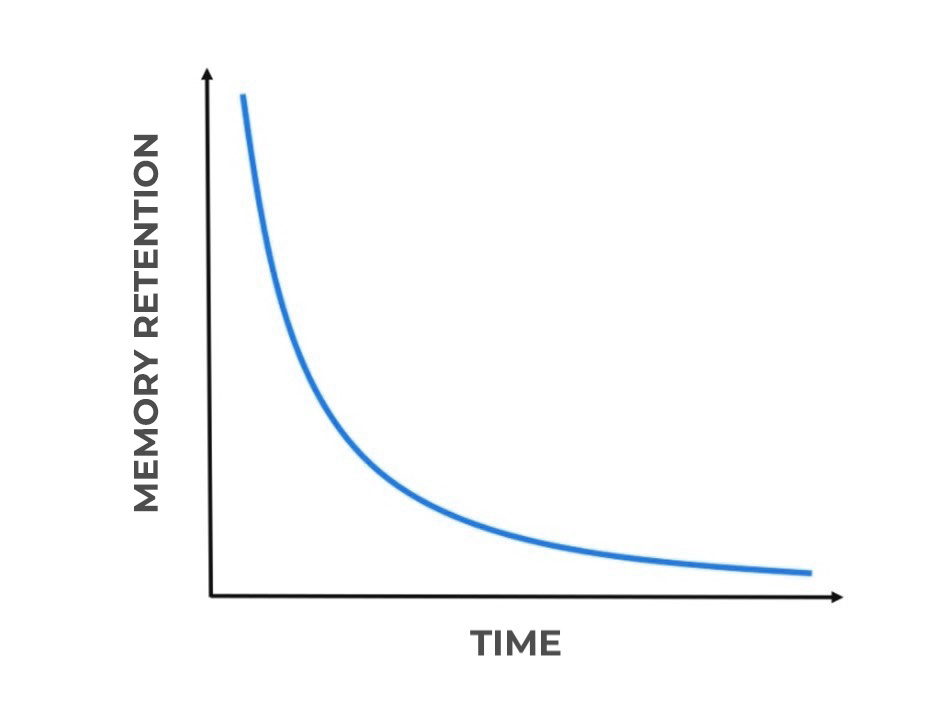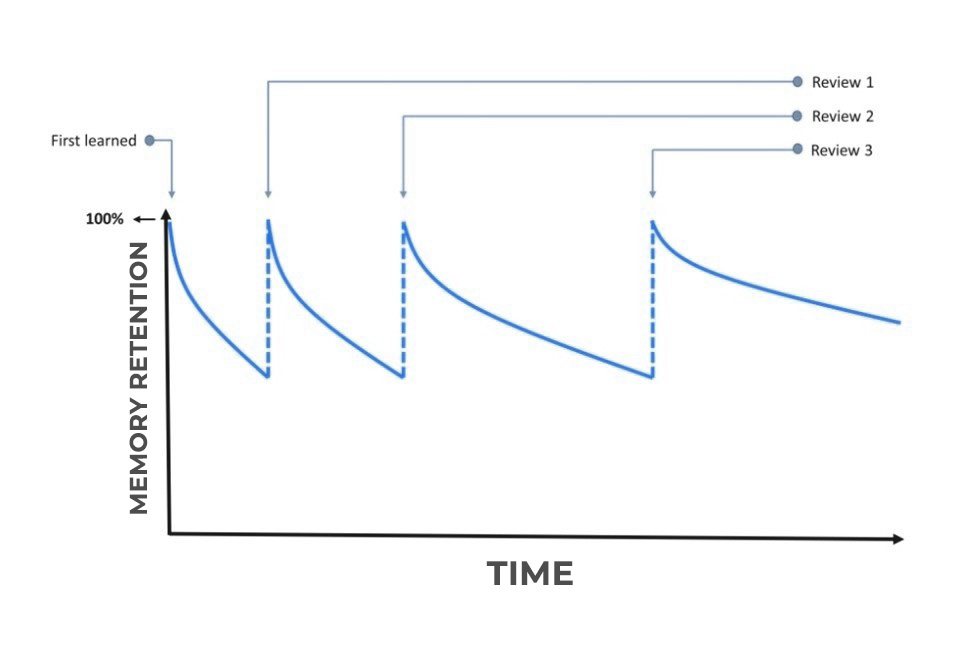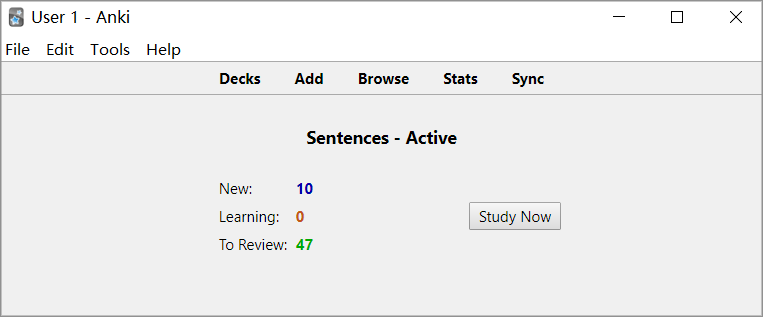Acquiring new vocabulary is one of the most difficult aspects of Chinese. Let’s face it – trying to memorize long lists of words is tedious and time-consuming.
In this post, I want to show you a method for learning Chinese vocabulary that’s easy, enjoyable, and effective. There are two aspects to this method: the first is sentence mining and the second is spaced repetition.
Keep reading to find out everything you need to know!
What is ‘Spaced Repetition?
Spaced repetition is a study technique used to review previously learned information.
The premise of spaced repetition is that you review something just before your brain forgets it so that the information remains fresh in your mind.
For example, when you learn a new Chinese word, there will be an interval of time before your brain inevitably forgets it. But by using spaced repetition you can review that word right at the end of this interval in order to retain it in your memory for longer.
Every time you review the word, the time it takes for you to forget it increases until eventually the word becomes anchored in your long-term memory.
The below graph illustrates what typically happens when you learn a new Chinese word. In the beginning, it remains fresh in your mind, but then you start to forget it and very soon you can’t recall it at all.
With spaced repetition, you review the word when it’s about to disappear from your memory, eventually anchoring it in your long-term memory. Here’s what that looks like on the graph.
As you can see from the graph above, the time interval between each review becomes longer and longer. So, for example, your first review might be a day later, your second review in four days, your third review after two weeks, and your fourth review after one month.
Spaced Repetition Software – Anki
You may be wondering how to implement this technique in your own learning. Well, luckily there’s an app available that makes this super easy.
The app is called Anki and you can download it for free on your desktop and/or mobile phone.
Anki is a flashcard app with an inbuilt spaced repetition algorithm that works out exactly when you need to review which card.
Anki is the best way to learn new vocabulary words because it prompts you to review words that it thinks you’re likely to forget. This means you don’t need to waste time reviewing words you already know!
How to use Anki
Anki allows you to create ‘decks’ of flashcards containing information that you need to learn, in this case, Chinese vocabulary words.
Once you’ve created your flashcard deck, you can tell Anki how many new cards you want to review per day (e.g. 10). Anki will then show you 10 new cards per day as well as any other cards that it thinks you need to review.
Some people like to create flashcards with a Chinese word on the front and the translation in their native language on the back. I would advise against doing this.
Why?
Because it’s far easier to learn vocabulary when it appears in context. When learning isolated words it’s difficult to grasp their true meaning. But seeing a word as part of a sentence helps you to understand how it’s used.
Reviewing sentence cards also allows you to pick up grammar patterns with little effort.
Anki will first show you the front of the card and then you can click to reveal the back. You then grade the card depending on how well you remembered it. Based on this, Anki will calculate when you next need to review it.
Check the screenshot below, you can see I have a Chinese sentence on the front containing a word that I don’t know (in this case 解读). On the back is the pinyin and the Chinese and English definitions.
Then I grade the card depending on how well I was able to recall the meaning of 解读. I can choose “Again”, “Hard”, “Good” or “Easy”. By Choosing “Again”, Anki will show me the card right away.
If I choose one of the other options, Anki will show me the card again in either 5, 10, or 11 days’ time.
I bet you’re wondering where to find sentences that contain new Chinese words? Well, that’s what we’re going to cover in the next section.
How to Compile your Own, Unique Sentence Deck
Although there are a lot of premade vocabulary lists and premade Anki decks out there, I would advise against using these.
Instead, I recommend learning vocabulary that you come across during your own learning and exposure to Chinese. This method of vocabulary acquisition is called ‘sentence mining’.
Sentence Mining
When you hear or see a new word, write down the sentence in which it appeared. You can then look up the definition of the word and add this to Anki as a new flashcard.
Learning words that you discover through exposure to Chinese is more effective than memorizing lists of new words that you’ve never seen before.
So where do you find these words? By listening to podcasts, watching Chinese shows, and reading comic books. Any activity that you do in Chinese is an opportunity to ‘mine’ for new vocabulary words.
Anki and Pleco
If you haven’t heard of Pleco before, it’s another must-have app for learners of Chinese. You can install it for free and it also works offline!
Pleco is a dictionary app that allows you to look up Chinese words using pinyin, characters or handwriting input.
That means no matter where you are, you can quickly look up the meaning of new Chinese words. Pleco also allows you to look up words and then save the corresponding dictionary entry as a flashcard.
The best part is that you can export saved vocabulary from Pleco as a .txt or .xml file and then import these cards into Anki for later review. This process gives you a quick and mostly automated way of creating new Anki flashcards.
Pleco and Anki truly are a powerful combination when you are trying to learn Mandarin Chinese with spaced repetition.
Reviewing your Cards
I would recommend reviewing 10 new cards every day. You can do more if you like, but remember that, due to Anki’s algorithm, as you increase the number of new cards, your total reviews will exponentially increase.
So if you decide to review 20 or 30 new cards each day, things can spiral out of control quickly and you may find yourself having 150 reviews to do in a couple of weeks’ time.
10 new cards per day mean about 50-60 reviews per day which takes about 20-30 minutes to complete.
Remember, as well as reviewing ten new words each day, you should also be looking to add 10 new words to your deck each day. This will ensure your deck keeps growing and your vocabulary continues to increase.
If you’re able to add 10 new cards to your deck each day, in a year you would have learned almost 4,000 new words!
Spaced Repetition: Final Thoughts
Words are like the building blocks of a language. To achieve a high level of proficiency in Chinese, you need to know a lot of words!
To learn Mandarin Chinese with spaced repetition is a simple and powerful way to rapidly learn new vocabulary. Anki is a free app that you can download on your computer and/or phone. Using Anki and Pleco you can learn new words quickly and easily
Remember to learn new words in context. This means creating flashcards that contain sentences instead of isolated words. Make sure you’re exposed to Chinese in some form every day and ‘mine’ for new sentences whenever you can.
As you continue to build your Anki deck and do your reviews, your knowledge of Chinese will improve and you will be able to understand more and more of the language.
We hope you enjoyed reading about how to learn Mandarin Chinese with spaced repetition! If you are interested in trying out this method with something, have a look at the new HSK vocabulary list! Let us know how the method works in the comments below.

GUEST POST
by Casey
Casey is the author of Teacup Chinese, a blog about learning Chinese and life in China. Casey spent 2 years in Beijing teaching English and he’s now taking his Chinese to the next level through daily immersion.













0 Comments